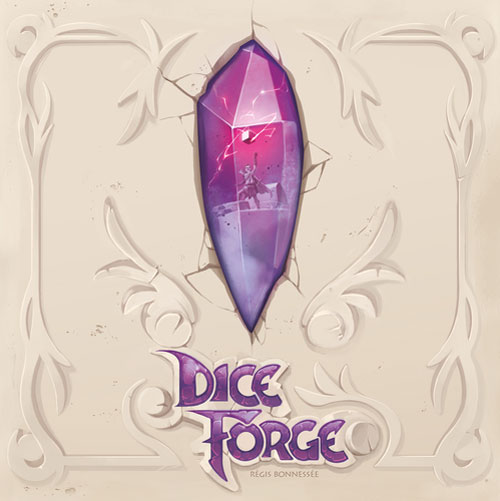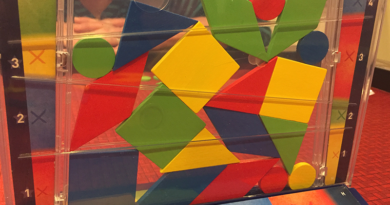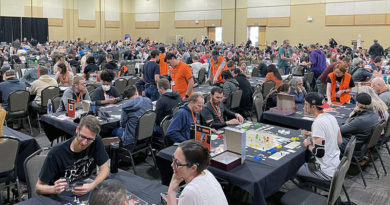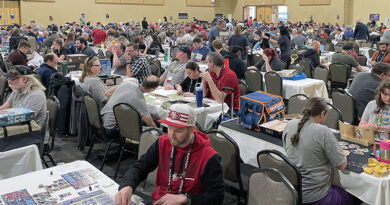Between Two Cities: Capitals expansion review
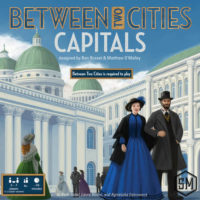
One of our favorite tile-laying games in the last few years has been Between Two Cities by Stonemaier Games.
There are a number of reasons why it’s such a great family board game.
It’s easy to learn, quick to play, requires coordination with your neighboring players, and allows up to 7 players to join in the fun.
And one of the best elements of the game is that it’s simultaneous play rather than taking turns. So everyone is engaged the whole game rather than waiting for others to take their turns.
So when Stonemaier Games published an expansion for Between Two Cities earlier this year, I immediately put it on my “must play” list.
Does Between Two Cities: Capitals live up to my high hopes? Let’s find out.
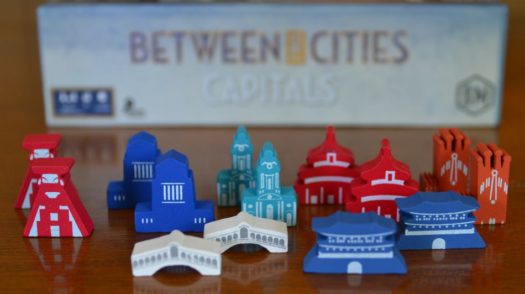
How to Play Between Two Cities: Capitals
Since this game requires the base game, if you’re not yet familiar with Between Two Cities, I’d suggest you first jump over to read our review of Between Two Cities to get an understanding of the basic game play. Since the basic game play and flow are unchanged from the base game, here I’ll just dive into the new elements the Capitals expansion adds.
There are 3 main additions to the game with the Capitals expansion: Landscape Mats, Civic Tiles, and Districts.
LANDSCAPE MATS
The first thing players will notice in the Capitals expansion are the Landscape Mats. That’s because they’re unlike anything else in the game.
They’re cardstock mats that have different scenes covering a 3×3 area. Five of the 9 areas in the landscape tile can not be built on and represent a natural feature within the city limits – like rivers, lakes, mountains, and such.
Each landscape layout is unique and creates a fun added challenge to constructing valuable cities.
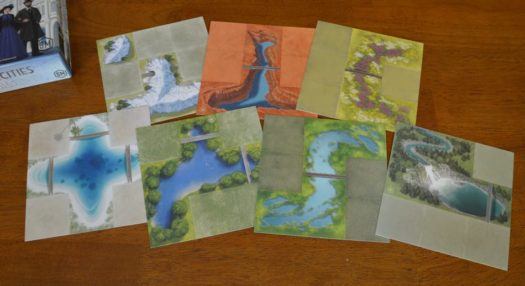
When setting up the game, each city between the players will randomly be given a landscape mat. Players can build around this feature however, they’d like as long as the entire landscape feature remains within the finished 5×5 city grid at the end of the game.
The landscapes also include bridges over the natural features that represent those areas being adjacent for placement and scoring purposes.
The first tile placement of the game in each city must be on one of the empty spaces of the Landscape Mat.
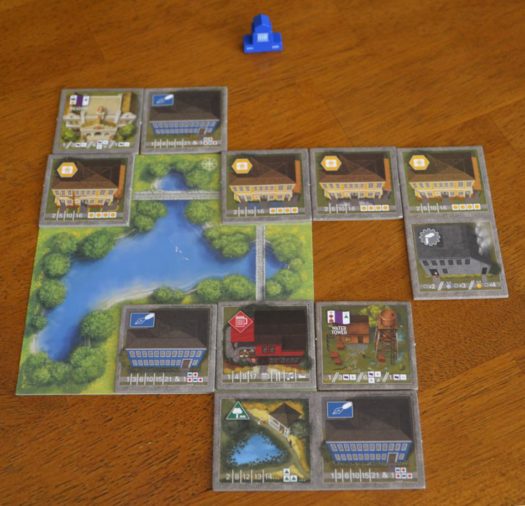
CIVIC TILES
The Capitals expansion includes 21 new building tiles that are referred to as Civic Buildings. Since this is a new type of building, the game also includes new player aid / reference cards that incorporate this new type of building for scoring.
The Civic building tiles are mixed in with the regular building tiles of the game and are distributed just like all building tiles.
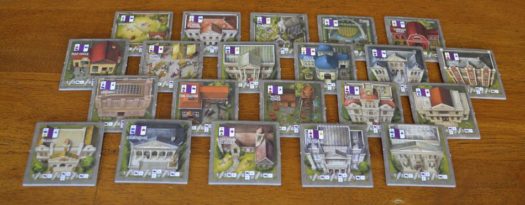
Since the layout size of each city is increased from the base game, in rounds 1 and 3, players draw 9 building tiles at the start of the round instead of 7.
Just like other buildings, Civic buildings are also scored at the end of the game.
Each Civic building tile shows 2 positive tile types and 1 negative tile type when placed adjacent to it. These combinations are different for every Civic building. So players need to pay careful attention in their placement choices.
For scoring, if a Civic building is not adjacent to any positive or negative tiles, it scores 1 point. If it’s adjacent to only one of the positive types, it scores 3 points. If it’s adjacent to both positive types, it scores 6 points. And if it’s adjacent to a negative type, it only scores 1 point.
Also, Civic tiles don’t count as a type when scoring Houses.
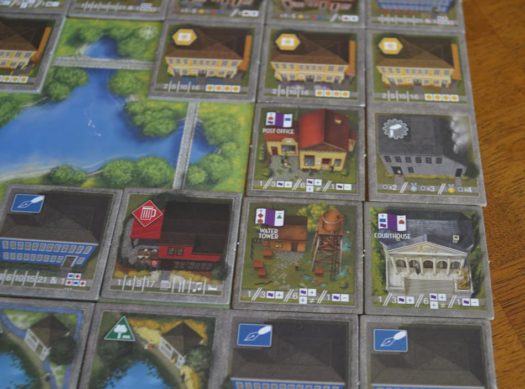
DISTRICTS
Another new way to score in Between Two Cities: Capitals is through Districts.
At the start of the game, 2 District cards are randomly placed above each of the 3 District Scoring tiles. Since there are 7 District cards, this means one will be unused in each game.
Each pair of District cards is a district that citizens want in their city. They are regions of connected tiles of those types within a city. A District doesn’t need to have both tile types to be counted.

At the end of the game, after all individual tile types are scored, players score the Districts.
For each District’s scoring tile, the city with the largest and second largest size District gets the indicated points. If there’s a tie for first place, the cities evenly split the total points available. There won’t be a second place. If there’s a tie for second place, all the tied cities evenly split the second place points (rounded down).
For example, for District 1, the city with the largest District of those tile types scores 9 points. The city with the next largest District of those types scores 3 points. If there was a tie for first place for District 1, the cities would evenly split the 12 points.
Just like in the base game, once all city scores are totaled, a player’s final score is the lower score of their two cities.
The player with the highest final score is the winner!
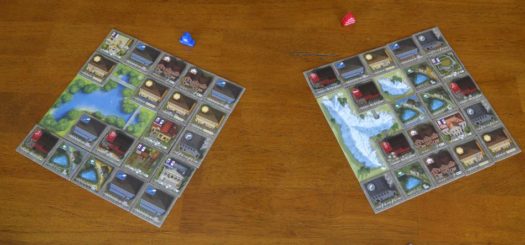
Our thoughts on Between Two Cities: Capitals
With as much as we love the original game, we were also very curious about what we’d think of the additions in Capitals.
We’re happy to report that it doesn’t disappoint!
The new elements in Between Two Cities: Capitals keep the essence of the game in tact while adding new things to think about while playing.
We love the simplicity and simultaneous play of the original. And even though Capitals adds a new building type that scores in a unique way, the game still plays quickly.
Players still need to work well together with their neighboring players as they build a city they can both be proud of. And it still feels like a joint puzzle.
Players still can’t have everything in every city. They must make trade-offs between their options.
And that’s what keeps us coming back to the game.
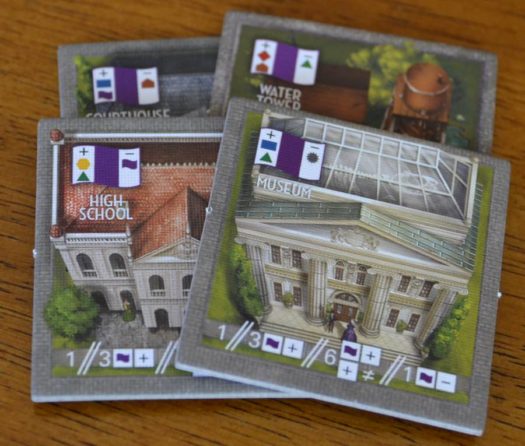
Between the 3 new elements, the Civic tiles feel like the biggest new driver to the game. Since a new building type was added, the size of the cities needed to increase. Yet, moving even one size larger in a grid means plenty of additional spaces. Thus, the addition of the landscape mat were brought in to the game.
By adding these mats, the city size could increase without needed a ton more tiles so the game can stay balanced in its scoring. As such, we think these landscape tiles are a great addition.
Not only do the keep the game balanced between city size and scoring, they add a cool visual appeal to every city. An added bonus is that every city layout will definitely be unique now. Even though we’d never encountered a city being build just like another before, these landscape mats remove that possibility completely.
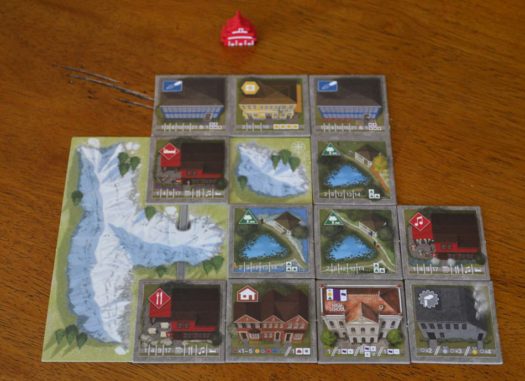
We also like the District scoring.
As if we don’t have enough to consider when placing tiles already, the Districts give added bonuses for players who keep an eye on their combinations as well.
The beauty in the District scoring is that they’re likewise randomized at the start of the game. Rather than a set combination of building types for District 1, 2, and 3. These change every game.
Sometimes there will be natural benefits to these Districts and sometimes there won’t be.
For example, a District that’s comprised of Houses and Factories may not be very beneficial (since Houses next to Factories only score 1 point). However, if one city goes to town on Factory construction, they may snag that District bonus as well as the multiplier effect in the Factory scoring.
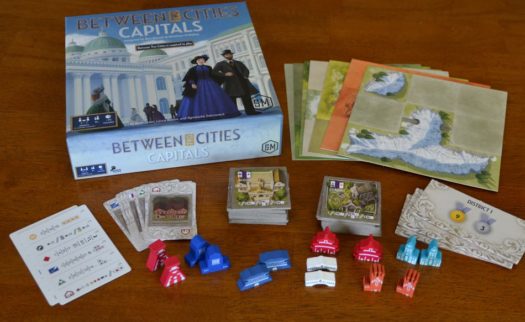
Yet even with these various additions, the game experience remains true to the original. And we love that!
Looking into the future, we may still play Between Two Cities without the expansion from time to time. But mostly I foresee us playing with the Capitals expansion.
Big thumbs up Between Two Cities: Capitals!
We’d like to thank Stonemaier Games for a review copy of Between Two Cities: Capitals.


